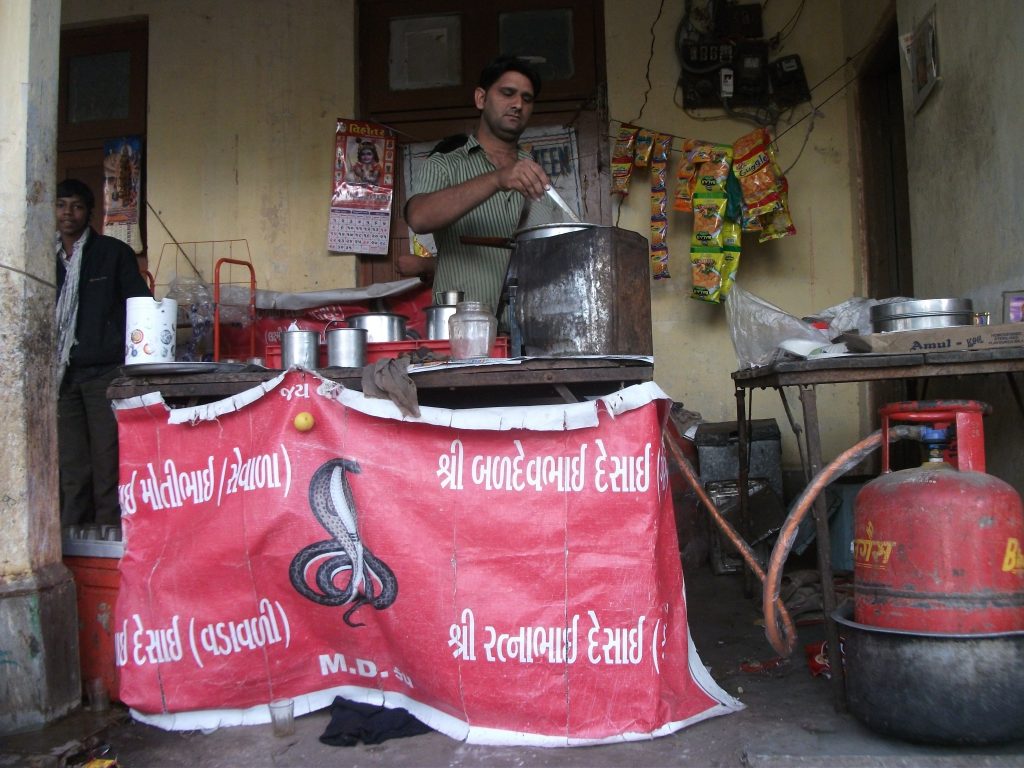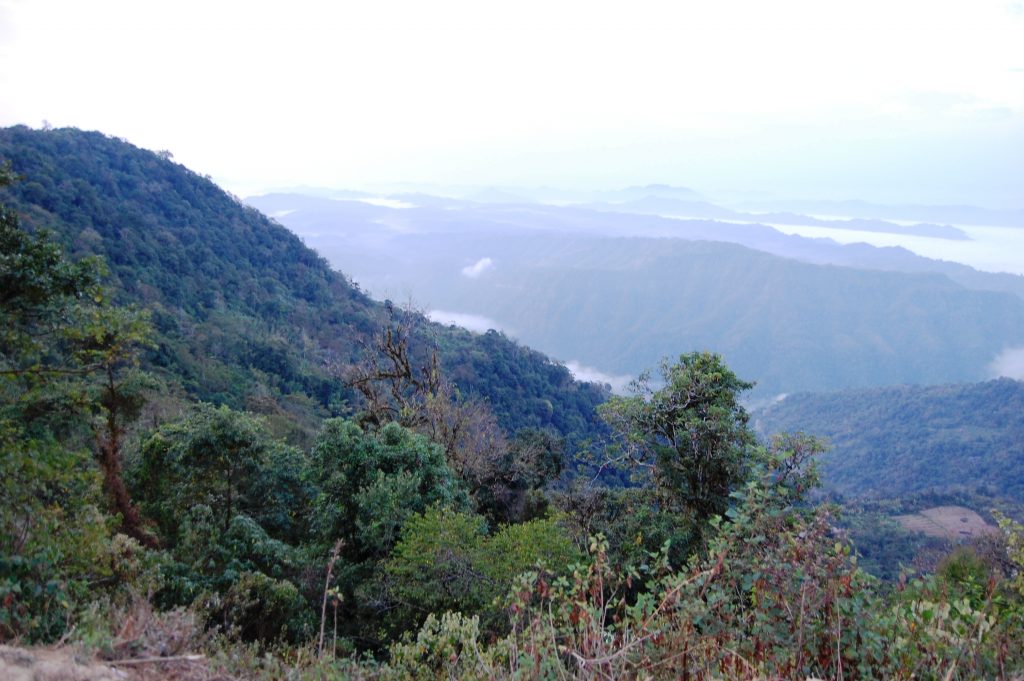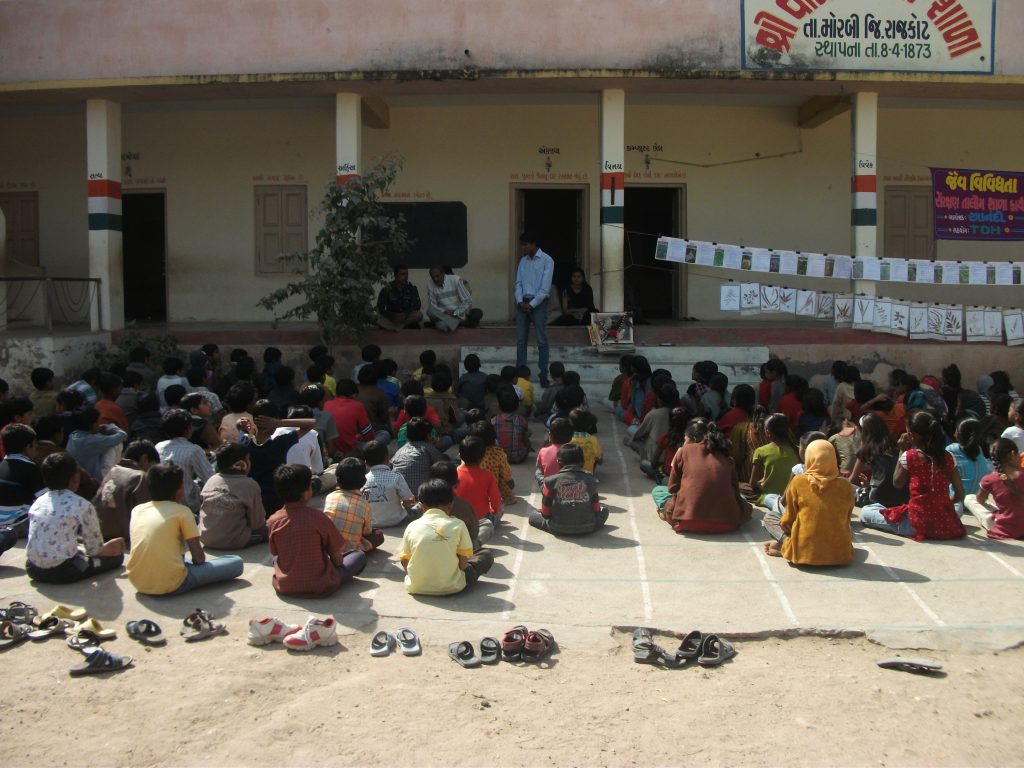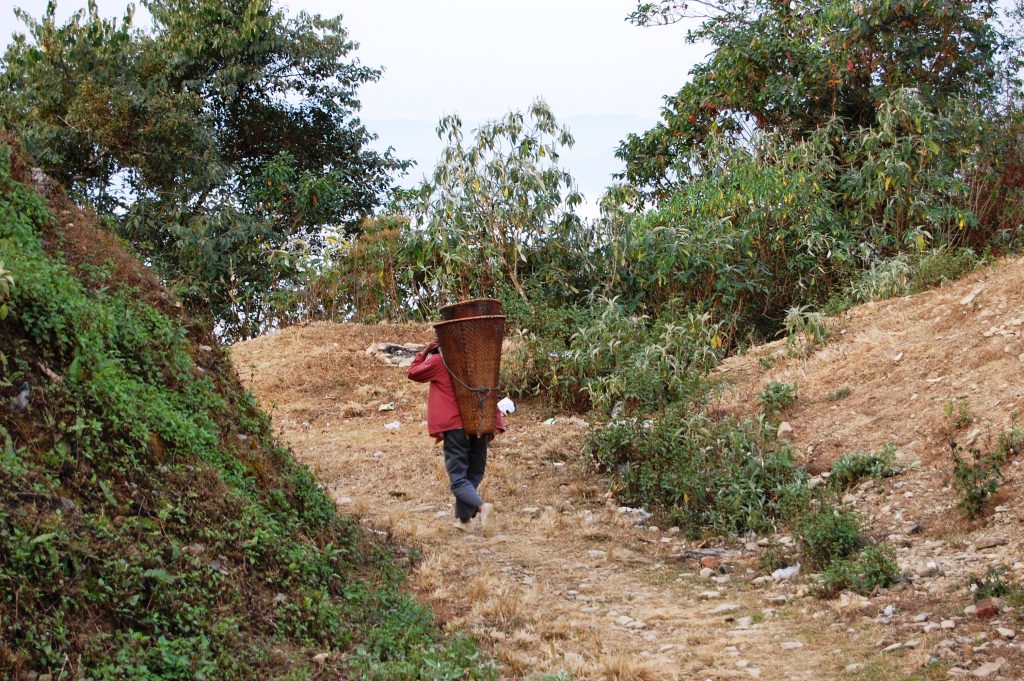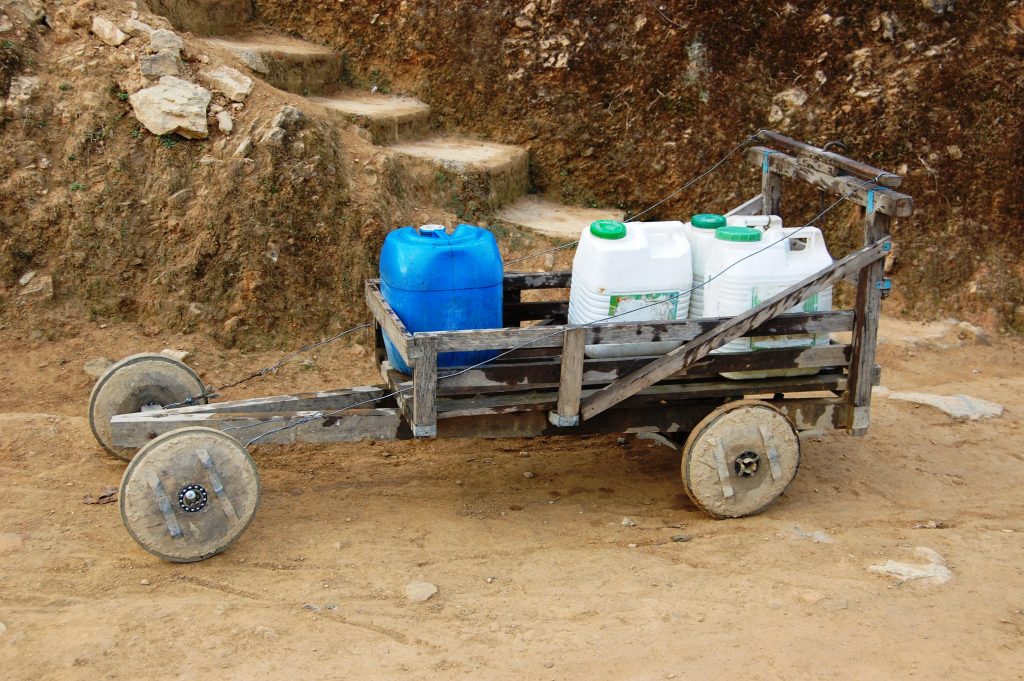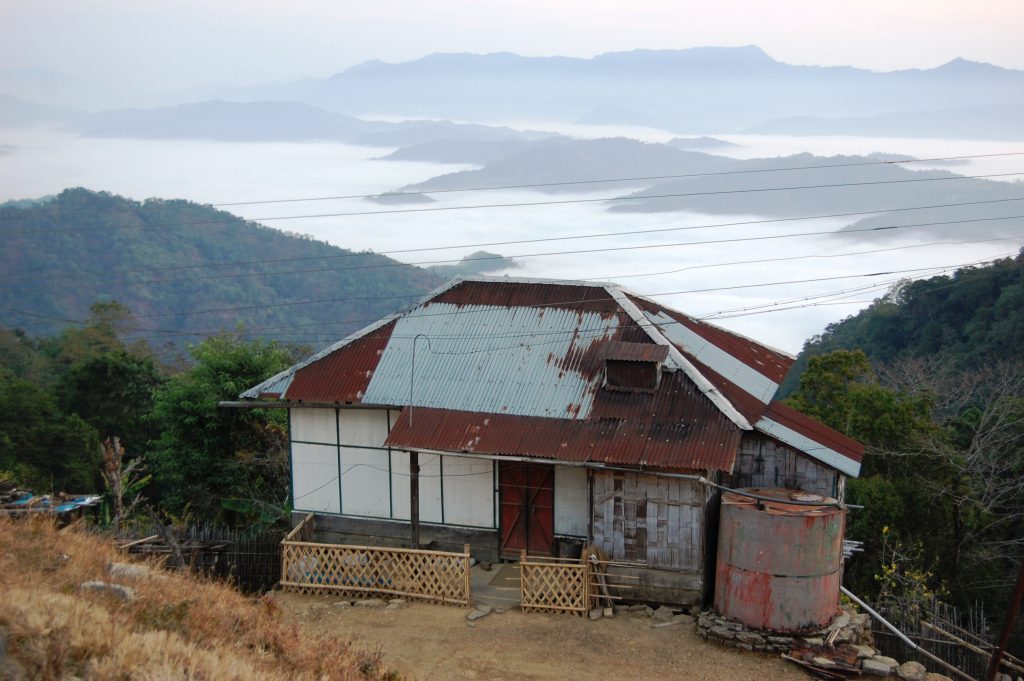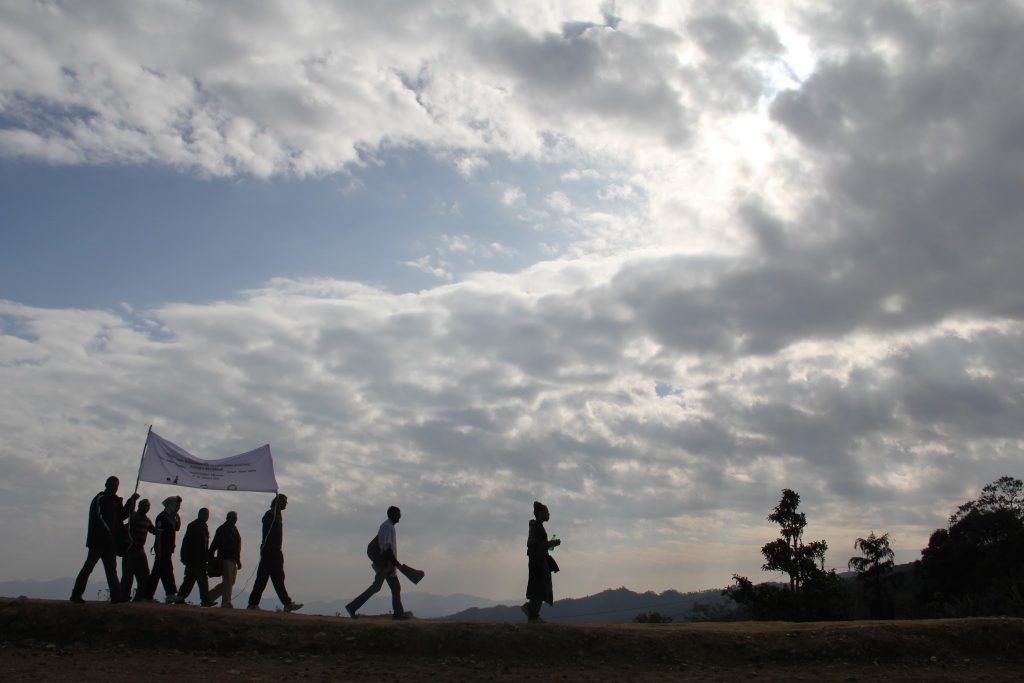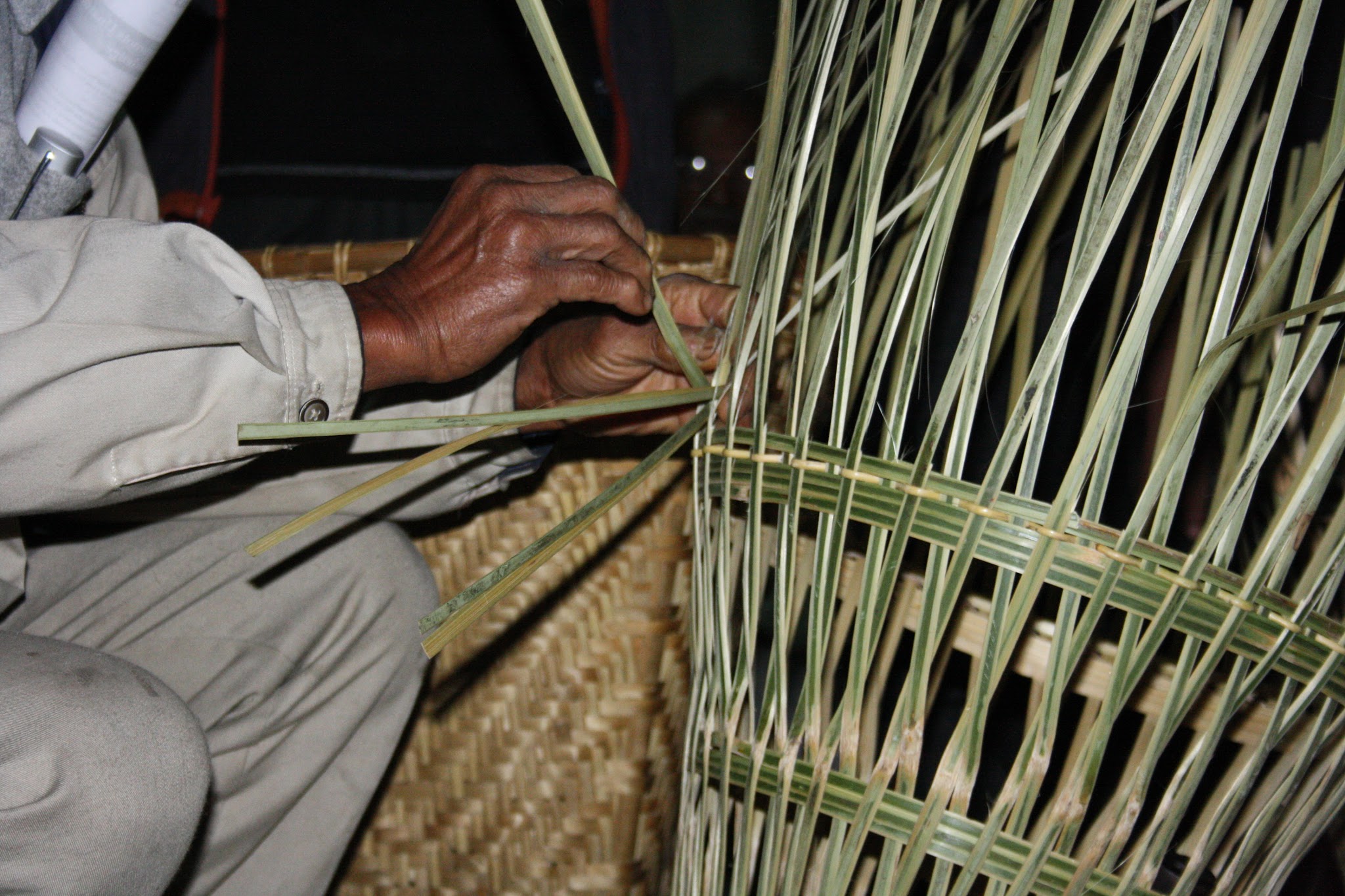Get Next Shodhyatra Update:
Phone:
079-27913293, 27912792
Email:
shodhyatra@sristi.org
28TH SHODHYATRA (SAILAM-MELRIAT, AIZAWL DISTRICT, MIZORAM)
January 9-14, 2012
FOR JUST A DROP OF WATER: SANSKAR OF SANITATION AND CONSERVATION (PART-I)
While walking in Mizoram from Sailam to Melriat, in the second week of January, we came across an extraordinary spirit of water conservation. Every single house in smaller villages had a roof top water conservation mechanism. The streets were extremely clean. There were dustbins every 50 or 100 yards. Even in the evening, one could not see any sign of trash on the roads. The drains were clean too. There were urinals for men and women at every turn or corner. When was the last time I saw urinals in villages? In my own village in UP, we don’t have these. Having walked thousands of kilometres in the last decade and half, we have not seen such a collective discipline in smaller villages; big villages and towns were not very different though they were not as bad either.
But while absorbing all this cleanliness and conservation spirit, we came across an interesting sight. There was a tap from which a few drops were dripping. In most places, this is common sight and one would not be surprised to find a water pool below or around the water point. Here was an inspiring sight. There was a small channel put below the tap (see figure) which drained the dripping water into a canister. There was no water wastage around at all. The Shodhyatris were impressed by the sight. “Could a culture be so frugal and miserly in using water?” they wondered. In the next village, one of us went to a tap to have a cup of water in the morning to take herbal medicine. There was already a bucket being filled by kitchen volunteers. When they saw him, they closed the tap and pulled the bucket away. Someone took the cup from his hand, opened the tap, filled the cup, closed the tap, and gave the cup back to him. Then he moved the bucket under the tap and opened the tap to fill the remaining bucket.
“What would I have done?” he asked himself and then critically added, “Ï would have pulled the bucket away, filled the cup, and moved the bucket back. In this process, if some water would have flown waste, I might have ignored it. I can’t ignore it anymore.” We are, of course, very conscious about the fact that water wastage is very rampant in our society. What is more agonising is that even some of us who are aware, conscious and feel responsible have habits, which are not bench marked with the most exalted values and cultures. Can something be done about it? We have to ask ourselves. Let us revisit a Zen story, which we have mentioned many times before. About 2000 years ago, a teacher asked a disciple to bring a glass of water. The disciple obediently brought the water. The teacher drank it and gave the glass back to the disciple. “Take the glass back to the kitchen,” he told the disciple. The disciple followed the
order and returned.
“Recount all the steps you followed,” the teacher demanded. The disciple traced all the steps he had followed, beginning with the call from the teacher for a glass of water, his going to the kitchen to bring the glass, and then going back to return the empty glass. The teacher asked him once more. The disciple repeated the same sequence. The teacher was not happy. He asked a bit furiously once again to retrace all the steps. This time a bell rang. The disciple recalled that while going back to the kitchen, he had thrown away just a drop of water still in the glass. The moment he said, “just….a drop of water…” he is said to have attained his ZEN. Why did Buddha have to invent this story at a time when there was no shortage of water, and there was no likelihood of such a shortage to arise for the next 1500 or 2000 years or so? Why do good teachers think in such long term? Why has this story not become part of our collective societal DNA?
How did Mizoram do it? After 1971, the insurgency ended and the presiding Chief Minister at the time vacated the seat for the leader of Mizo National Front (MNF). Most of the villages were moved to the road side and at higher altitude along the mountains. In a span of 30-40 years, the villagers had moved from a situation of abundant water in the valleys to a situation of scarcity. The culture of water conservation thus became so ingrained among children and adults alike that nobody had to be told about it. There were no slogans on the walls, no hoardings at all, no warning of punishment, just complete virtual silence. Could we make Mizoram the water harvesting capital of India?
Could people from Tamil Nadu, Gujarat, Rajasthan and other places visit these villages and get inspired? Will the leaders and adults listen or should children just break from the tradition of indifference towards these values? Will the water resource ministry organise the national consultation on water conservation and sanitation say in Sailam or Champai? Why not? Why should we not have national centres of excellence in places, which have achieved distinction in that domain, rather than having all headquarters in Delhi or Mumbai or Kolkata? India is young and young people don’t like to be sermonised. Slogans would not help to conserve water, but walking small steps, practicing a few things daily, and auditing one’s own behaviour will make us more responsive to the inner call.
Once the call for conservation and hygiene emanates from within, perhaps change will follow inevitably. The inner call will generate authentic appeal and Mizos can help us. Amid a breathtaking panaroma, we stumbled upon some effective institutions for conservation, community action, hygiene and sanitation. Hardly three decades old, fruitful practices safeguarding nature stem from these institutions. If these practices were emulated elsewhere in the country, we would have had much better hygiene.
Starting on January 10 from Sailam, we met Pu Talanglawama, a healer who had developed a formulation for treating skin diseases. He wanted us to send a report to him after experimental verification. It is not often that healers ask us to verify and inform. The way he developed this formulation was interesting. He took one of the wellknown plants and mixed it with other intuitively selected plants.
Later in the day, six school children were recognised for their participation in the biodiversity competition. While walking through the village, in some houses, we noticed pseudostems of bananas being boiled in big vessels, apparently, to be fed to the pigs. These plants are abundant in the mountains. We had the opportunity to savour fruits from some local fruit trees like sertawk (Citrus medica L), sapthei (Passiflora edulis Sims), serthlum (Citrus reticulata Blanco) and khawmhma (Rhus sp.). We had a cup of tea at the house of the village head and observed an efficient cooking stove system in the kitchen.
On the way to the next village, several shodhyatris passed by without noticing an interesting innovation in the use of a circular serrated saw for cutting wood. In Gujarat and many other states, when the saw gets heated up while cutting wood, one has to pour water on it to cool it every now and then. Here, a local woodcutter had placed a used glucose drip in such a way that the water kept on dripping on the lower part of the cutting table, cooling the saw regularly. This increased the efficiency of the saw and the work did not have to be stopped intermittently. We were told that this was a common practice among many local woodcutters there. Pu Laltluanga had been practising this for the last three years. In machine workshops, such a practice might have been prevalent among woodcutters but the yatris certainly had not seen it earlier. We walked through nine kilometres of forest to meet Lalhunthara at Sialsuk. Starting at a much younger age, the 33 year old had innovated several products. One of them was a wireless transmission system for the guitar so that people could listen to him while sitting at home, within a kilometre radius. He showed us an old Mahindra pickup vehicle in which a battery operated hydraulic system was fitted alongside several other modifications, which the original vehicle did not have. Besides this, he had also designed a hydroger for lifting water.
On their way out, the shodhyatris visited Lalhunthara’s workshop to look at other experiments that he was working on. The night halt was at Samlukhai, where a meeting had been organised in the community hall. Several local craft workers had come with bamboo products to show their acumen. Some of the innovations scouted by the Honey Bee Network were shown with the help of a cell phone based projector, which evoked a lot of interest. The next morning, two herbal healers Tlanachhanlrana and Lalrinsangi, were felicitated at Chamring village for sharing the treatment of toothache, throat pain and muscle sprain.
THE JOURNEY TO SAMSUIH
The path to Samsuih took us through beautiful turns around the forest-clad Mount Hmuifang, which stands 1619m tall. Shodhyatris took photographs of the sun rays peeping through the clouds with mesmerising hues. On the way, somebody had put a small bamboo leaf to let water oozing out of the rocks fall at a distance so that people passing by could drink it. Several travellers stopped there to fill their bottles. While the villages were extraordinarily clean, the main road was littered with waste thrown by bus passengers. This was an unfortunate spectacle in the sanitation capital of the country.
A little girl sang a song impressing all the shodhyatris. Her mother was also known to be a singer and she had apparently trained her seven year old daughter quite well. Several bamboo crafts were displayed. Some children were involved in various creative activities including paintings by R.V. Prakash and others. They all sang a farewell song and proudly showed their paintings. The next morning, the walk to Thiak village began. On the way, yatris stopped by the house of a centenarian woman, Pi Pkaphnuni. It was one of the most memorable moments of the trip.
After touching her feet and felicitating her, the yatris requested her for some words of wisdom. Immediately, she asked everybody to fold their hands and summoned a collective prayer. Praying together, perhaps, generated a collective spirit; one that could not be achieved alone. In Thiak, the yatris met the villagers in the community hall. Lalthangzuala, a class eighth student displayed a miniature house made from bamboo with extraordinary details. It cost about Rs.500 – 800.
An idea competition was organised and a six year old kid, Van Lal Hnaiha proposed the use of bicycles with thicker or bigger wheels for muddy roads. An elderly healer, Pu. Sanghana Chhagte (63) was honoured for sharing many herbal practices related to blood pressure, kidney problems and centipede bites, among others.
The next destination was Maubuang village. The name Maubuang comes from ‘Mau’ meaning bamboo and ‘Buang’, a brownish or yellow colour. The bamboo growing on the slopes used to turn brown or yellow due to soil nutrient deficiency and hence the name of the village. Lalramzauva, a herbal healer experimented with bamboo vinegar for use in pest control for paddy and also as a medicine for stomach problems and intestinal worms. Since, the shodhyatris were very keen to understand the process of making and using vinegar for pest control he explained that unfiltered dark bamboo vinegar was effective for pest control and the filtered one was used as a medicine.
The captain of the women’s football team of Mizoram, Pi Janet Vanneihsangi hails from this village. She was honoured and appreciated for her extraordinary achievements. While walking to the next village, Aibwak, through a forest, the shodhyatris observed small seedlings on the roadside being sheltered by makeshift wooden protective rings. Young men and women volunteered by cutting dried wood; the income generated by sale of wood was to be used for community and church activities. Though, without these activities, no community can really maintain autonomy and self-reliance. Such practices are rapidly disappearing in several villages around the plains.
Aibwak was a bigger village with a small pharmacy. It was also evident that as the direct dependence on nature decreased and that on market based products and services increased, the institutional strength subsequently declined. The sanitation standards went down and the willingness of communities to engage in dialogue about sustainable living and managing resources diminished.
The planned meeting with the villagers could not take place in the night. However, the local community leaders came to the community hall to meet the shodhyatris. A farmer from Nepal, Sandesh Rai, had come here as a labourer, years ago. He was adopted by the community upon marrying a local girl and was, thereafter, called Zonunkhara. In his orange garden, he used ash to repel the pest with good effect. He also wanted yatris to send him solutions for the problem of leaf curling and premature falling of oranges. A feedback session for the shodhyatris took place at night.
The next morning was the last day of the walk. After trudging on for eight kilometres, the shodhyatris stalled at Muallungthu village in the noontime. After lunch, a village meeting was organised in the community hall where an animated discussion took place; a young girl, Lalhmingmawii, sang a lovely song that filled everyone’s heart with joy. Later in the day, we honoured a centenarian – Pu Zahmingthanga. The last leg of the journey began with a visit to the royal house. The village chief had got the permission for us to visit the royal house where various dignitaries were received and important meetings were held. This was a completely wooden structure without nails to hold it firm. There was a huge pillar in one of the rooms through which the prayers were to be sent up to heaven. Outside the house, whorl of grass with knots was hung.The nature of the knots conveyed the venue and the time for a meeting.
After coming out of the royal house, all the shodhyatris sat under a tree and reflected on the lessons they had learnt. The agro-biodiversity in the fields was visible everywhere. Most Mizos are literate and have an extremely clean environment in and around their houses. The common roads are quite clean with dustbins at regular distances. The children have been brought up in such a way that they never had to be told about civic duties.
The role of women is very prominent in the Mizo culture. Women there clearly have an independent voice. Music runs through their veins and defines their identity. It is not surprising that some of their bands and choirs are receiving national attention. Every village has toilets for men and women, a rare sight in most Indian villages. In one village, we observed that the local women did not let the shodhyatris assist them in cleaning the dishes as they did not trust us in terms of judicious water use. The Young Mizo Association (YMA) is one of the most powerful and influential organisations of Mizoram. The volunteers of YMA and the village council members organised the food and lodging in every village and facilitated community interactions. Having learnt about more than 500 traditional and contemporary practices, the shodhyatris were truly indebted to the villagers. The extraordinary hospitality and warmth touched everyone’s heart. The fact that local standards of sanitation and water conservation could inspire the entire nation may have been ignored by policy makers but was certainly not lost on the shodhyatris. Everybody was touched by the individual and community action for conservation and sanitation.
It will not be inappropriate to suggest that states which boast of much more economic progress like Gujarat, Tamil Nadu and Maharashtra could learn by sending community delegations to Mizoram to study how local communities can set such high standards of social and ecological responsibility.
FLICKR GALLERY
